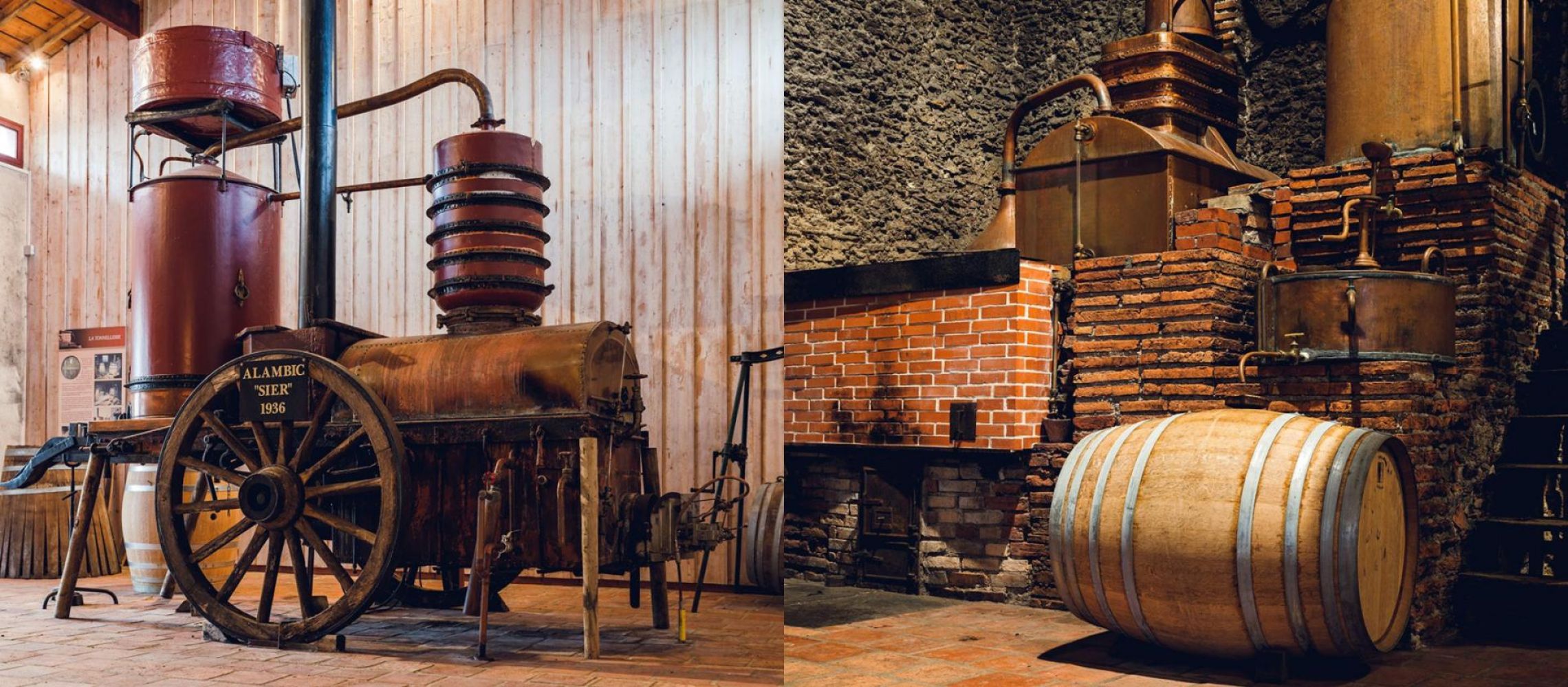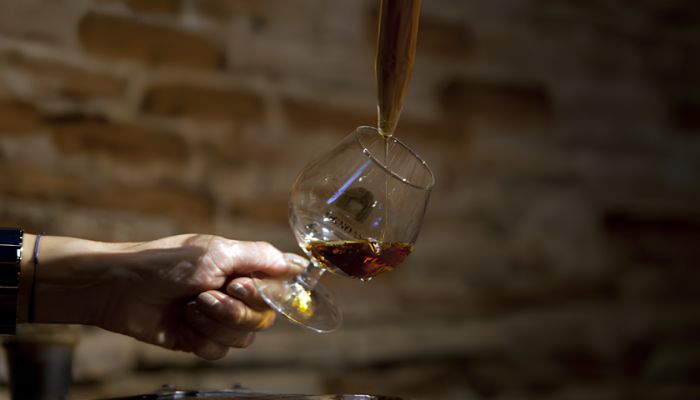Super Early Deadline
30 November 2025
Judging
Date
24 & 25 March 2026
Winners Announcement
22 April 2026
30 November 2025
24 & 25 March 2026
22 April 2026

In the spirits world, Armagnac stands shoulder to shoulder with Cognac as a distinguished gem. Much like its more famous cousin, Armagnac boasts a rich history and complex flavors that make it a favorite among connoisseurs. In this guide, we will explore the fascinating world of Armagnac, its production process, and some prominent producers who have mastered the art of crafting this exquisite eau-de-vie.
Armagnac is a type of brandy, hailing from the Gascony region in southwestern France. The most notable distinction between Armagnac and Cognac lies in their production areas. While Cognac is produced in the Charente region, Armagnac comes from Gascony. This geographical difference contributes to the unique characteristics of Armagnac.
Armagnac's production history dates back to the early 14th century, making it one of the oldest spirits in France. It embodies the essence of artisanal craftsmanship and tradition. Distillers in this region take great pride in creating a product that speaks to its heritage.
Armagnac production is an intricate process that begins with the cultivation of white grape varieties, including Ugni Blanc, Folle Blanche, and Colombard. These grapes are harvested and fermented, and the resulting wine is distilled into eau-de-vie. However, Armagnac differs from Cognac in terms of distillation. Armagnac is typically distilled only once, resulting in a spirit with a fuller, more robust flavor.
The distilled eau-de-vie is then aged in oak barrels, where it undergoes a magical transformation. The interaction between the spirit and the wood gives Armagnac its unique bouquet of flavors. Armagnac must be aged for a minimum of one year, but many producers choose to age it for much longer, with some bottles reaching several decades.

Image Source: Domaine-ognoas
Armagnac's flavor profile can be described as diverse and complex. While the specific characteristics can vary based on the producer, there are some common tasting notes to look for:
Fruitiness: Armagnac often exhibits fruity notes, ranging from plum and apricot to citrus and tropical fruits.
Spiciness: Hints of spice, including cinnamon, nutmeg, and pepper, add depth and warmth to the spirit.
Oakiness: The aging process in oak barrels imparts vanilla, toffee, and woody undertones.
Herbal and Floral: Subtle herbal and floral notes can also be detected, adding complexity to the flavor profile.
Nuts and Chocolate: Some Armagnacs have nutty and chocolatey elements, providing a delightful contrast to the fruit and spice.
Château de Laubade - Located in the heart of Armagnac country, Château de Laubade has been a family-owned estate since 1870. Their Armagnacs are known for their complexity, offering a wide range of aromas and flavors. The Château produces vintage Armagnacs that have been aged for extended periods, resulting in an exceptional taste experience.
Domaine d'Ognoas - With a history that can be traced back to the 13th century, Domaine d'Ognoas is one of the oldest Armagnac producers. They are committed to traditional production methods and have an impressive collection of vintage Armagnacs. Their meticulous attention to detail and dedication to heritage make their Armagnac a must-try for enthusiasts.
Dartigalongue - Founded in 1838, Dartigalongue is a name synonymous with quality and consistency in the world of Armagnac. They offer a broad range of Armagnac expressions, from young, vibrant spirits to well-aged, refined selections. This diversity caters to a wide spectrum of preferences, making Dartigalongue a versatile choice.
Château du Tariquet - Known for their bold approach to Armagnac production, Château du Tariquet has set itself apart by blending traditional techniques with modern innovation. This producer offers an extensive portfolio, from traditional vintage Armagnacs to innovative blends that are perfect for contemporary cocktails.
To fully appreciate Armagnac, serve it in a tulip-shaped glass to concentrate the aromas. It can be enjoyed neat or with a splash of water to release its full bouquet. Pairing Armagnac with the right accompaniments can elevate the tasting experience to new heights. Here's a closer look at some delicious pairings that complement the rich flavors of this exquisite eau-de-vie:

Image Source: Chateau de Laubade (Instagram Page)
Dark Chocolate: Armagnac and dark chocolate make a heavenly pairing. The deep, complex flavors of the brandy harmonize beautifully with the bittersweet notes of quality dark chocolate. The combination creates a luxurious and indulgent experience for your palate.
Roasted Nuts: Whether it's almonds, hazelnuts, or walnuts, the nutty notes in Armagnac find a delightful counterpart in roasted nuts. The subtle sweetness and roasted character of the nuts create a pleasant contrast to the spirit's fruitiness and spice.
Creamy Cheeses: Creamy, soft cheeses like Brie or Camembert offer a lush and creamy texture that complements the full-bodied nature of Armagnac. The richness of the cheese balances the spirit's complexity, making it a delightful pairing for a leisurely evening.
Foie Gras: For a truly Gascony-inspired experience, serve Armagnac with foie gras. The unctuous and savory qualities of foie gras harmonize with the brandy's spiciness and oaky undertones. This pairing is a classic choice that celebrates the region's culinary heritage.
Cigars: Armagnac and cigars have a long history as companions. The complexity and warmth of the brandy pair wonderfully with the flavors of a fine cigar. The smokiness of the cigar enhances the spiciness and oaky elements of the Armagnac, creating a sensory symphony.
Fresh Fruits: If you want to offer a lighter pairing, fresh fruits like apples, pears, or grapes can be an excellent choice. The natural sweetness and juiciness of the fruit provide a refreshing contrast to the spirit's depth.
Spiced Desserts: Spiced desserts, such as apple pie or cinnamon-infused pastries, can be an excellent match for Armagnac. The spiciness of the dessert complements the brandy's own spice notes, creating a delightful fusion of flavors.
Coffee: A cup of strong, black coffee alongside Armagnac can create a wonderful contrast. The bitterness of the coffee contrasts with the spirit's sweetness and enhances the complexity of the eau-de-vie.
[[relatedPurchasesItems-63]]
Armagnac is a magnificent spirit with a rich history and an array of flavors that cater to the most discerning palates. Whether you savor it neat, in cocktails, or paired with culinary delights, Armagnac embodies the spirit of Gascony and the art of distillation. Its legendary producers, like Château de Laubade, Domaine d'Ognoas, Dartigalongue, and Château du Tariquet, continue to craft this exceptional eau-de-vie that stands the test of time. Explore the world of Armagnac, and you'll embark on a journey through centuries of tradition and taste.
Note: Header Image Source - Traditional Armagnac Disiller: Domaine d'Ognoas
Show your spirits where it matters. Get your products tasted by top bartenders, buyers and experts at the London Competitions — enter now.